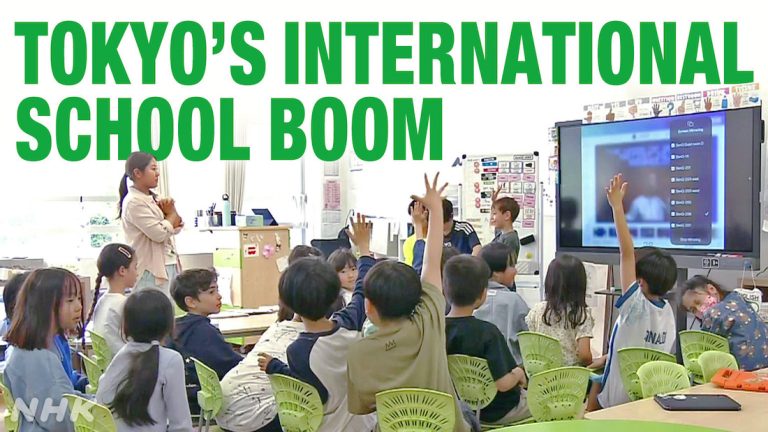
Tokyo – NHK Japan reports that thousands of Japanese children in Tokyo are bypassing the country’s traditional education system in favor of international schools, where lessons are taught in foreign languages and curricula prioritize creativity over rote learning.
Despite steep tuition fees and legal uncertainties, enrollment in these schools is surging, with over 4,800 Japanese children attending international institutions in Tokyo’s central wards alone.
A Shift in Education Priorities
International schools like Aoba-Japan International School in Nerima Ward are witnessing a quiet revolution. Half of its students are now Japanese, a stark contrast to past decades when expatriate families dominated enrollment. Classes are capped at 20 students, with no textbooks—instead, students follow globally recognized programs like the International Baccalaureate (IB), designed to prepare them for overseas universities.

“Young Japanese parents want their children to thrive globally,” said Shibata Iwao, chairman of the school’s board. “The demand for international education is rising.”
Parents cite English proficiency, leadership development, and a collaborative learning environment as key draws. One mother of two daughters at a Tokyo international school noted, “My kids have gained confidence through presentations and group work—skills they wouldn’t get in a rigid public system.”

Legal and Financial Hurdles
Japan’s education law mandates that public and private schools follow a national curriculum, leaving most international schools unaccredited.
Families risk fines for non-compliance, though enforcement is inconsistent. Tuition ranges from ¥1–3 million (7,000–7,000–21,000) annually, with boarding programs costing up to ¥10 million ($70,000).
Yet, parents are willing to pay. “It’s an investment in their future,” said a Tokyo-based father whose child studies at an IB school.
Challenges for Public Education
The trend alarms experts like Waseda University’s Professor Okamoto Tomochika, who warns that the exodus could weaken Japan’s public schools. “This reflects declining trust in the system,” he said. While supporting educational diversity, Okamoto urged policymakers to modernize public education to retain families.
A Global Mindset
For now, international schools fill a gap. At Aoba-Japan, bilingual teachers guide students through project-based learning—a stark contrast to Japan’s lecture-style classrooms. “We’re nurturing critical thinkers, not test-takers,” said a faculty member.
As Japan grapples with globalization, the rise of international schools signals a generational shift in what parents value—and what they’re willing to risk for their children’s success.
Japanese Families Flock to International Schools for Global Edge (May 2, 2025)